| Srl | Item |
| 1 |
ID:
130652
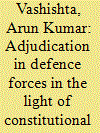

|
|
|
| 2 |
ID:
130651
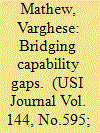

|
|
|
| 3 |
ID:
132801


|
|
|
|
|
| Publication |
2014.
|
| Summary/Abstract |
Burma was inhabited by migration of Mongol people from China thousands of years ago as part of a migration that also settled Mongol people in Assam, the hills and valleys of Northeast India, Bhutan, Sikkim, Nepal, and Tibet. Another wave migrated and populated South East Asia-Malaya, Vietnam, Laos, Cambodia, Indonesia and the Philippines. In Burma, a majority settled in the Central plains, while others 'settled on the hill ranges that extended north-south on either side of the Central plains. All these different groups had evolved animist religions. In India to the West, two major religions evolved, besides numerous animist religions too. The two major religions were Hinduism and Buddhism. It was the Buddhist king Ashoka who propagated Buddhism to several countries to the West and East of his country. To the East, the emissaries of Ashoka carried Buddhism to Burma and several South East Asian countries, Vietnam, Cambodia, Laos, Sri Lanka, Tibet, China and Japan.
|
|
|
|
|
|
|
|
|
|
|
|
|
|
|
|
| 4 |
ID:
130638
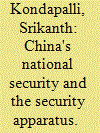

|
|
|
| 5 |
ID:
132797


|
|
|
|
|
| Publication |
2014.
|
| Summary/Abstract |
An attack helicopter (AH) is a military helicopter specifically designed and built to carry weapons for attacking targets on the ground, such as enemy infantry, armoured vehicles and structures. Weapons used on AHs can include automatic cannons, machine-guns, rockets, and guided missiles. Many AHs are also capable of carrying air-to-air missiles, though mostly for purposes of self-defence. AHs are best employed to provide direct elevated fire support for ground troops, and, in the anti-tank role, to destroy enemy armour concentrations. With its unique ability to hover, take-off and land rapidly, the AH has extended the efficacy of air power by bringing it 'down-to-earth'. With the proposed induction of new generation AHs and raising of a Mountain Corps,' there is a need to critically evaluate the concept of employment, to effectively exploit the full potential of this potent force multiplier platform.
|
|
|
|
|
|
|
|
|
|
|
|
|
|
|
|
| 6 |
ID:
130646
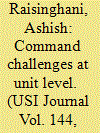

|
|
|
| 7 |
ID:
130650
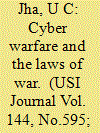

|
|
|
| 8 |
ID:
132796


|
|
|
|
|
| Publication |
2014.
|
| Summary/Abstract |
Following the successful conclusion of the "India and the Great War' international conference held at the USI from 05-07 Mar 14 (see report in the USI Journal of Jan-Mar 2104 pp. 112-126) considerable interest was generated both nationally and internationally in the project. This was reflected in the spike in number of "hits" on the project's internet based platforms including the Facebook and Flickr pages. The Inaugural and Valedictory speeches of both, the Hon'ble Vice President and the Foreign Secretary, respectively, were featured on their own websites and served to generate greater awareness about the project as well as
to act as a stimulus for greater official involvement in the numerous activities planned to highlight India's role in the war on an international platform.
|
|
|
|
|
|
|
|
|
|
|
|
|
|
|
|
| 9 |
ID:
130656
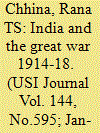

|
|
|
| 10 |
ID:
130649
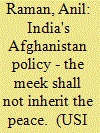

|
|
|
| 11 |
ID:
130653
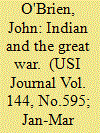

|
|
|
| 12 |
ID:
130654
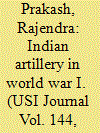

|
|
|
| 13 |
ID:
130657
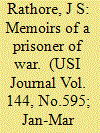

|
|
|
| 14 |
ID:
130647
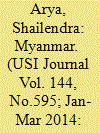

|
|
|
| 15 |
ID:
132798
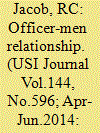

|
|
|
|
|
| Publication |
2014.
|
| Summary/Abstract |
A soldier is an epitome of valour and courage. He does his duty under unforeseen circumstances, even under incomprehensible odds, which sometimes lead to grave injuries and loss of life. Simultaneously, an officer in the Armed Forces is a dedicated professional leader who has to lead by example. Together they
fight for their country and unreservedly perform the tasks assigned to them both, in peace and war.
|
|
|
|
|
|
|
|
|
|
|
|
|
|
|
|
| 16 |
ID:
132799
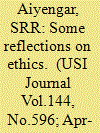

|
|
|
|
|
| Publication |
2014.
|
| Summary/Abstract |
The Greek word 'ethicos' which means character or manners. The horizon of this definition may further be expanded and the concepts of right or wrong behaviour or conduct are incorporated. As ethics acts as a guide of action, it can be also termed as a normative discipline. We are social creatures. More often than we realise, we get our cues for acceptable and unacceptable behavior from our environment as well as our intrinsic traits of character. This is even truer in the intense social environment of a military organisation or institution. Various ethical theories provide a system of rules or principles that guide us in making decisions about what is right or wrong and good or bad in a particular situation. It provides a basis for understanding what it means to be a morally decent human being. Stated another way, ethical theories when applied to leadership are about both, the actions of leaders and who they are as people. The choices leaders make and how they respond in a given circumstance are informed and directed by their ethics.
|
|
|
|
|
|
|
|
|
|
|
|
|
|
|
|
| 17 |
ID:
130640


|
|
|
| 18 |
ID:
132800
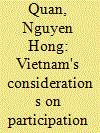

|
|
|
|
|
| Publication |
2014.
|
| Summary/Abstract |
True UN peacekeeping started in 1948 as an important initiative during the period of East-West confrontation. At that time, after the Second World War, none of the two major powers, the United States and the Soviet Union, emerged as absolute dominant. Therefore, the two powers decided to create a "neutral" group called "peacekeepers" under the auspices of the UN. The initiative was accepted by the majority of UN members and was expected to work as a mechanism to prevent and settle conflicts without one of the two big powers taking advantage and/or to prevent war in certain strategic areas.
|
|
|
|
|
|
|
|
|
|
|
|
|
|
|
|